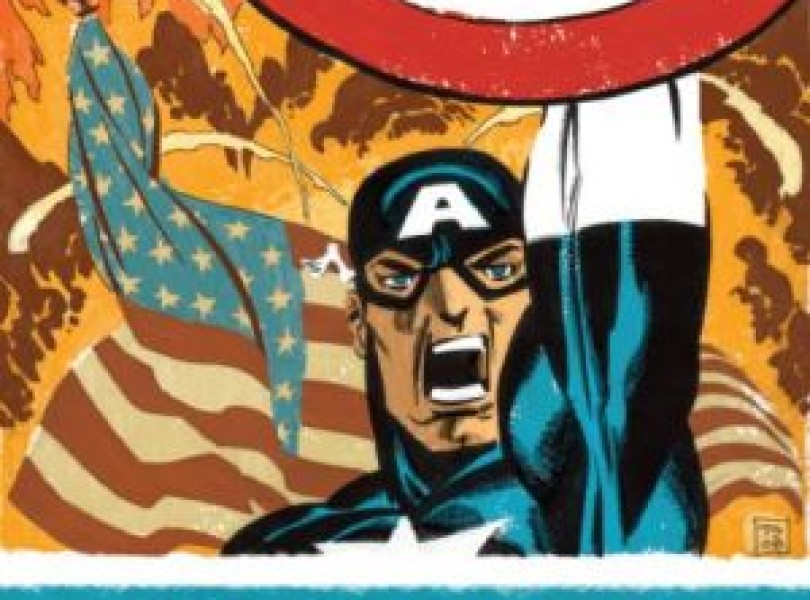A star-spangled flashback story.
This is turning out to be a good month for infamously unfinished comic book series. Hot on the heels of the new Miracleman comic, Marvel is finally delivering the much-hyped, much-delayed Captain America: White. The series was first announced way back in 2008, in a time before Cap was a Hollywood superstar and when writer Ed Brubaker was just establishing Bucky Barnes as the heir to the Cap mantle. Since then, only the #0 preview issue and a Howling Commandos tie-in comic have been released. But for hungry Cap fans, the wait is finally over. As for whether issue #1 is worth the incredibly long wait, that depends mainly on what you’re expecting out of the book.
Captain America: White is stylistically and thematically similar to Jeph Loeb and Tim Sale’s various other “Marvel Color” books (Spider-Man: Blue, Daredevil: Yellow and Hulk: Gray). Once again, the series involves a character mourning the death of a loved one (in this case, a recently defrosted Steve dealing with the loss of Bucky) and reflecting back on a simpler, more innocent time in Marvel history. The tone is very sentimental, as the book both celebrates the early days of Captain America and mourns the fact that they’ve long since passed to the history books. It’s an effective approach despite the fact that, even this very Wednesday, fans can walk into a comic shop and buy a new comic featuring the continuing adventures of a resurrected Bucky Barnes. There’s still a pathos and a sense of longing to the script.

Aside from the wistful narration and framing sequences, the series is clearly aiming to just tell a good, old-fashioned adventure featuring Cap, Bucky and the Howling Commandos. The Golden and Silver Age influences are apparent everywhere. For one thing, there’s more than a hint of Jack Kirby’s distinctive style in Tim Sale’s painterly art. After so many collaborations between Loeb and Sale, it’s great to see the latter shake up his approach and strive for something more angular and flamboyant. It helps sell the “horrors of war” element in what is otherwise a pretty lighthearted WWII flashback. Loeb opts for the classic approach to depicting Cap’s world, with Steve still maintaining a secret identity and the Steve/Bucky relationship having more of a big brother/little brother vibe than is common in modern stories. This does make the story feel a little too hokey at times, but at least that element helps distinguish Cap: White compared to Marvel’s various other contemporary Cap stories.
One final note – the $4.99 price tag seems a little much considering that this issue features only the standard 20 pages of new content. The rest is taken up by a reprint of Captain America: White #0, a comic the more eager readers of this series probably already have in their collection. It’s nice to have that material on hand as a refresher, but maybe Marvel should have just eaten the extra printing cost considering how long readers have had to wait for this issue?
Captain America: White doesn’t offer a dramatic reinvention of the character or his mythology. This series is more about paying homage to an older, simpler time in Cap’s career and exploring the brotherly bond between Steve and Bucky. If you enjoyed Loeb and Sale’s previous Marvel projects, you’ll find a lot to like with this collaboration.



